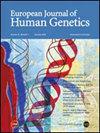Reassessment of FBN1 variants of uncertain significance using updated ClinGen guidance for PP1/BS4 and PP4 criteria
IF 4.6
2区 生物学
Q2 BIOCHEMISTRY & MOLECULAR BIOLOGY
引用次数: 0
Abstract
Marfan syndrome (MFS) is a genetic disorder caused by an FBN1 variant and is diagnosed based on the revised Ghent criteria, which incorporate clinical manifestations and genetic testing. Up-to-date FBN1 variant interpretation is crucial for proper diagnosis and management of MFS; however, some FBN1 variants of uncertain significance (VUSs) remain inconclusive despite applying Clinical Genome Resource (ClinGen) FBN1-specific guideline. Recently, the ClinGen guidance for PP1/BS4 co-segregation and PP4 phenotype specificity criteria (new PP1/PP4 criteria) were released. Here, we performed reassessment of FBN1 VUSs using these new PP1/PP4 criteria. FBN1 VUSs collected from December 2015 to April 2024 were reassessed according to the ClinGen FBN1-specific guideline and new PP1/PP4 criteria. Medical records and previous studies were reviewed to evaluate the phenotype-specificity of evidence based on the revised Ghent criteria. Collectively, 927 patients with suspected MFS underwent FBN1 sequencing and 72 VUSs were detected. When applying the FBN1-specific guideline only, of 72 VUSs, 29 (40.3%) were reclassified as pathogenic variants (PVs) or likely PVs (LPVs). When additionally applying the new PP1/PP4 criteria, 16 (37.2%) of the remaining 43 VUSs were reclassified as LPVs. After reassessing FBN1 VUSs according to the new PP1/PP4 criteria, the rate of reclassification from VUS to PV/LPV significantly increased from 40.3% to 62.5%. The new PP1/PP4 criteria provide sufficient evidence for evaluating the pathogenicity of FBN1 variants detected in MFS patients fulfilling the revised Ghent criteria and will be helpful in clinical analysis.

使用更新的ClinGen PP1/BS4和PP4标准指南重新评估不确定意义的FBN1变异。
马凡氏综合征(MFS)是一种由FBN1变异引起的遗传性疾病,根据经修订的根特标准进行诊断,该标准包括临床表现和基因检测。最新的FBN1变异解释对MFS的正确诊断和管理至关重要;然而,尽管应用临床基因组资源(ClinGen) FBN1特异性指南,一些不确定意义的FBN1变异(VUSs)仍然没有定论。最近,PP1/BS4共分离ClinGen指南和PP4表型特异性标准(新PP1/PP4标准)发布。在这里,我们使用这些新的PP1/PP4标准对FBN1 VUSs进行了重新评估。根据ClinGen FBN1特异性指南和新的PP1/PP4标准对2015年12月至2024年4月收集的FBN1 vus进行重新评估。根据修订的根特标准,回顾了医疗记录和以前的研究,以评估证据的表型特异性。总共有927例疑似MFS患者进行了FBN1测序,检测到72例VUSs。当仅应用fbn1特异性指南时,72例vus中,29例(40.3%)被重新分类为致病性变异(pv)或可能的pv (LPVs)。当另外应用新的PP1/PP4标准时,其余43个vu中有16个(37.2%)被重新分类为lpv。根据新的PP1/PP4标准重新评估FBN1 VUSs后,从VUS到PV/LPV的重新分类率从40.3%显著增加到62.5%。新的PP1/PP4标准为评估符合修订根特标准的MFS患者中检测到的FBN1变异的致病性提供了充分的证据,并将有助于临床分析。
本文章由计算机程序翻译,如有差异,请以英文原文为准。
求助全文
约1分钟内获得全文
求助全文
来源期刊

European Journal of Human Genetics
生物-生化与分子生物学
CiteScore
9.90
自引率
5.80%
发文量
216
审稿时长
2 months
期刊介绍:
The European Journal of Human Genetics is the official journal of the European Society of Human Genetics, publishing high-quality, original research papers, short reports and reviews in the rapidly expanding field of human genetics and genomics. It covers molecular, clinical and cytogenetics, interfacing between advanced biomedical research and the clinician, and bridging the great diversity of facilities, resources and viewpoints in the genetics community.
Key areas include:
-Monogenic and multifactorial disorders
-Development and malformation
-Hereditary cancer
-Medical Genomics
-Gene mapping and functional studies
-Genotype-phenotype correlations
-Genetic variation and genome diversity
-Statistical and computational genetics
-Bioinformatics
-Advances in diagnostics
-Therapy and prevention
-Animal models
-Genetic services
-Community genetics
 求助内容:
求助内容: 应助结果提醒方式:
应助结果提醒方式:


